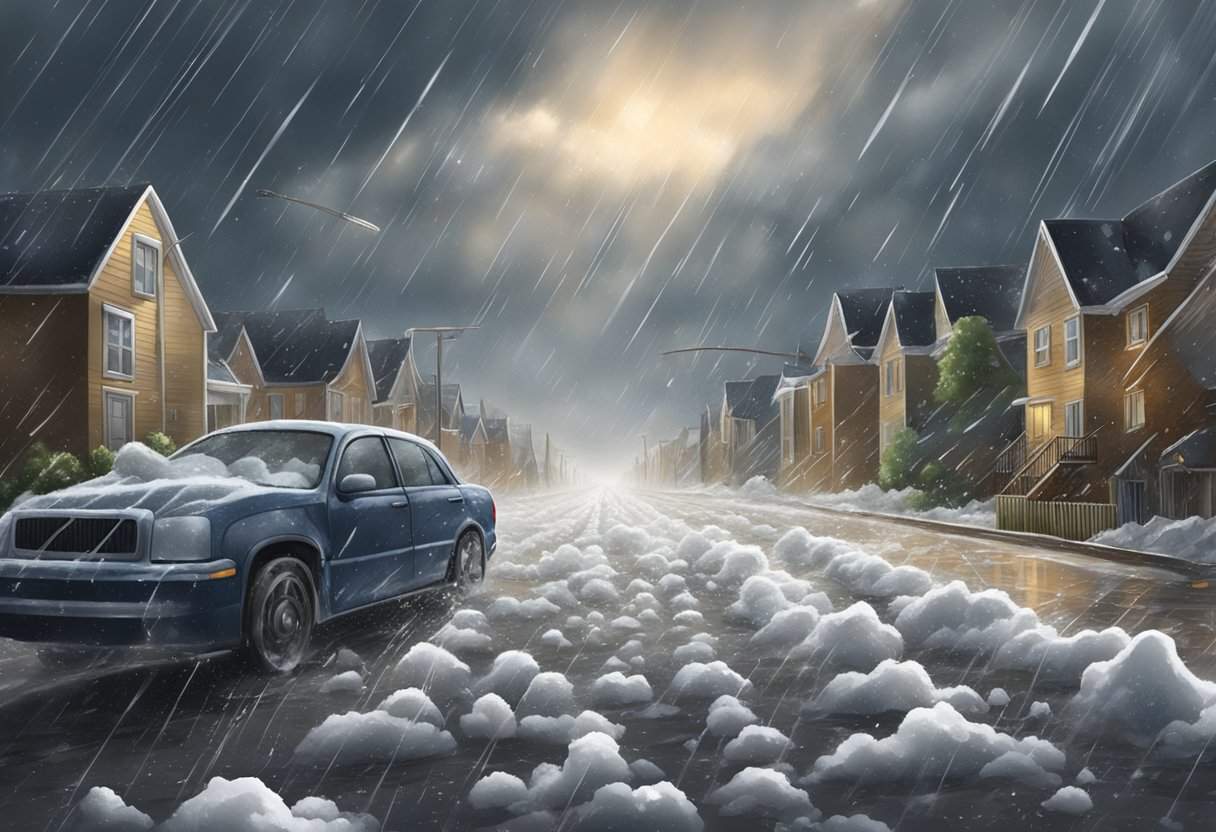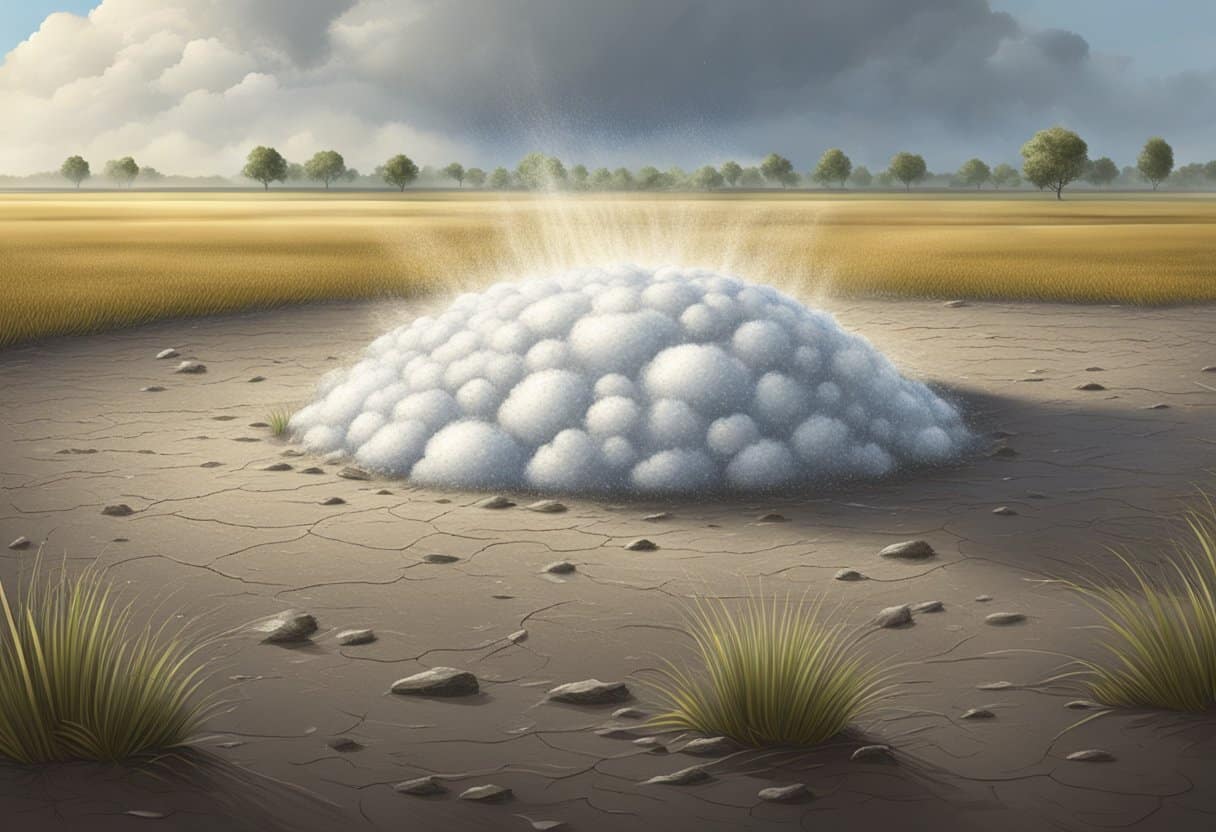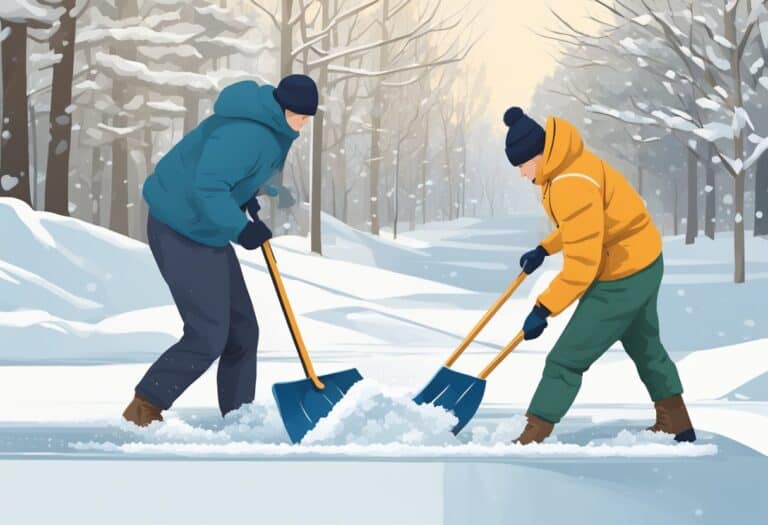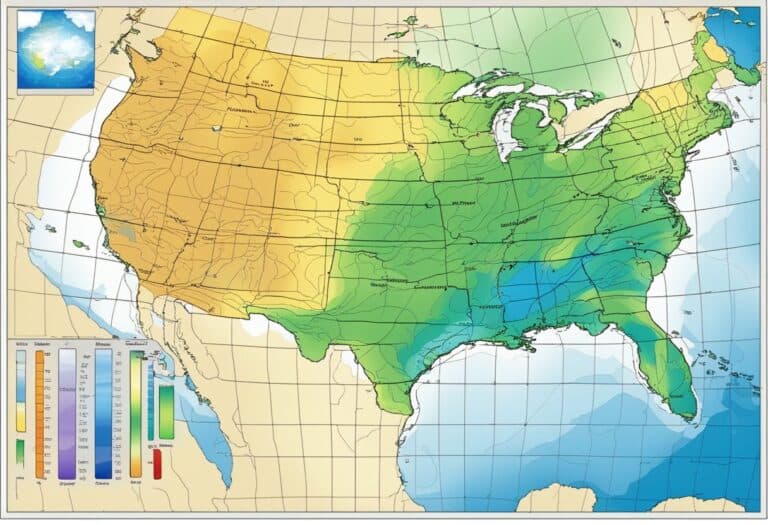Hail is a form of solid precipitation that consists of balls or irregular lumps of ice, each of which is called a hailstone.
It occurs during strong thunderstorms when updrafts carry raindrops into extremely cold areas of the atmosphere, freezing them into chunks of ice. As they are lifted up and then fall back down through the storm, they can go through this cycle multiple times, collecting layers of water and freezing, which makes the hailstones larger.
Understanding hailstorms is vital as they can lead to significant economic damage when they strike. These ice balls, which can vary from pea-sized to larger than a grapefruit, can cause substantial harm to buildings, vehicles, and agriculture.
Predicting hailstorms and detecting hail formation play crucial roles in mitigating these damages, providing warnings and preparation time for communities and industries likely to be affected.
Formed in powerful storms, hailstones grow by collecting supercooled water, causing damage while offering valuable prediction challenges for meteorologists.
Formation of Hail
Hail is a form of solid precipitation that originates from thunderstorms or cumulonimbus clouds and involves a combination of updrafts, supercooled water, and temperature variations.
The Role of Updrafts and Supercooled Water
When updrafts in a thunderstorm are strong, they carry water droplets high into the atmosphere where temperatures are below freezing. Here, the liquid droplets become supercooled and can freeze on contact with particles like ice crystals or dust. This process begins the formation of hailstones.
Hailstone Development
As the supercooled droplets continue to collide and freeze on the initial ice particle, the hailstone grows in layers. Each layer can trap air bubbles, which may give the hailstone a milky appearance. If the updraft is strong enough, it can prevent hailstones from falling, allowing them to grow larger.
Factors Contributing to Hail Size
The size of hailstones, which can range from small pellets to the diameter of a softball, is influenced by factors like updraft strength and the amount of supercooled water available. A stronger updraft can support larger hailstones, resulting in a bigger size before they eventually succumb to gravity.
Hailstone Descent and Impact
Eventually, hailstones become too heavy for the updraft to support and they begin their descent to the ground. Their fall speed, which is influenced by their size, mass, and the wind, determines the severity of impact on property, crops, roofs, cars, and livestock upon collision with the ground. The effects of this impact can range from minor damage to severe destruction.
Characteristics of Hailstorms

As you explore the characteristics of hailstorms, you’ll notice that they are complex weather events defined by specific atmospheric conditions and geographical patterns. Understanding the common weather scenarios and regions prone to these events can offer insight into where and why hailstorms occur.
Typical Weather Conditions
Hailstorms primarily form within thunderstorms where there are strong, upward currents of air known as updrafts. Cumulonimbus clouds, commonly associated with severe weather, are the perfect breeding grounds for hail. The process starts when drops of water are carried upward into the cloud by the updraft. They freeze and form tiny hailstones that can continue to grow as they are tossed around in the cloud, collecting more moisture and freezing upon contact with cooler air. When hailstones become too heavy for the updraft to support, they fall to the ground.
Typical weather conditions leading to hailstorms include:
- The presence of severe thunderstorms.
- Sufficiently low temperatures in the atmosphere.
- High levels of moisture in the air.
- Strong updrafts within cumulonimbus clouds.
Geographic Hotspots for Hail
Certain regions are more susceptible to hail due to their unique climatic and geographic characteristics. The area commonly referred to as Hail Alley—which includes parts of Colorado, Nebraska, and South Dakota—experiences frequent hail during the spring and summer months. Other global hotspots include northern Italy, parts of India, China, and Russia. Each of these areas typically has the right combination of atmospheric ingredients necessary for the formation of severe hail.
Some cities, like Phoenix, might also experience hail but less frequently due to their generally warmer conditions. The locations most prone to hail can be summarized as follows:
| Region | Frequency | Season |
|---|---|---|
| Hail Alley (US) | Very frequent | Spring/Summer |
| Northern Italy | Frequent | Summer |
| India | Seasonal variation | Monsoon |
| China | Frequent in parts | Summer |
| Russia | Variable | Summer |
| Phoenix | Infrequent | Variable |
By understanding these characteristics, you can better comprehend the dynamics of hailstorms and why certain areas face a higher risk of experiencing this severe weather phenomenon.
Impact and Damage
When hail storms occur, the damage can be extensive and costly. Understanding the specific impact on personal property, consequences for agriculture, and what safety measures can be taken is essential to mitigate the risks.
Effect on Personal Property
Homes: Hail has the potential to cause significant damage to the structural integrity of your house. The largest hailstone in U.S. history, recorded in Vivian, South Dakota, suggests the sheer size hail can reach, indicating the level of damage to roofs and skylights.
Vehicles: Cars are particularly vulnerable to hail, where speed and size of hailstones can result in dents and broken windows. It is not uncommon for severe hailstorms to lead to repair costs that exceed $1 billion.
Preventative Measures: Utilizing a garage or other shelter can prevent hail damage to your personal property. In absence of a garage, protective covers may offer a temporary solution.
Consequences for Agriculture
Crops: Your agricultural yield can be devastated by hail. Damage to crops from hail can diminish both the quantity and quality of the produce harvested.
Livestock: Hail can also pose a threat to livestock well-being, causing injury or distress. Ensuring adequate shelter for animals is key during storm clouds indicative of potential hail.
Safety Measures and Protection
Personal Safety: Always prioritize your safety above property during a hailstorm. Hail can be deadly, so seek shelter indoors immediately.
Trees and Landscaping: Maintenance of trees and other landscape features can reduce the risk of further damage from broken limbs during flash flooding.
Awareness and Response: Stay aware of weather warnings, as hail often accompanies tornadoes. Have a plan in place for quick action to protect yourself and your property.
Detection and Prediction
When you hear a weather forecast predicting the possibility of hail, it’s the result of sophisticated detection and prediction methods. These techniques are crucial for timely warnings to minimize property damage and ensure public safety.
Forecasting Techniques
Forecasters use a variety of tools to predict when and where hail may occur. Radar is key in identifying storm characteristics indicative of hail production, such as strong updrafts in supercell thunderstorms. Your local National Weather Service (NWS) office employs these technologies to monitor storms in real time. Radar signatures, like the presence of a “hook echo” often associated with tornadoes, may also suggest the potential for severe hail.
Another valuable forecasting technique involves looking for specific atmospheric conditions that tend to be associated with hail, such as large amounts of clear ice in the clouds, which can be a precursor to hail formation. Forecasting models, feeding on data from a network of weather observations, help in predicting the likelihood of hail several hours to days in advance, allowing you to take shelter if necessary.
Research and Advances in Meteorology
Recent advances in technology have enhanced prediction and detection capabilities significantly. Researchers have developed algorithms that analyze the velocity and reflectivity data from radar to detect hail. For example, an improved hail detection algorithm for the WSR-88D has shown better performance in predicting severe hail.
The National Severe Storms Laboratory has been at the forefront of this advancement, validating methods such as polarimetric hail detection, which considers the shape and size of precipitation particles. These enhancements in meteorological research provide forecasters with better tools to warn the public, affording you more time to secure property and seek shelter.
To support these detection algorithms, meteorologists also consider the role of friction in thunderstorms, which can influence hailstone trajectories and affect radar readings. Staying informed about such complexities and the latest in hail prediction can help you to better understand and respond to severe weather threats.
Frequently Asked Questions
In this section, you’ll find answers to common inquiries about hail, from its atmospheric formation to its relation with tornadic events.
How does hail develop in the atmosphere?
Hail forms within strong thunderstorm clouds when updrafts carry droplets of water high enough that they freeze. As these pellets of ice ascend and descend inside the cloud, they accumulate layers of ice, growing larger before gravity finally pulls them to the ground.
What distinguishes hail from sleet?
Hail and sleet may appear similar, but they form under different conditions. Hailstones develop during thunderstorms and can become quite large. Sleet, on the other hand, is formed when raindrops freeze while falling through a layer of cold air, resulting in smaller ice pellets that occur during winter storms.
What are the potential dangers associated with hail?
Hail can pose significant risks, causing extensive damage to crops, vehicles, and buildings. It can also lead to injury or even fatalities, especially when hailstones reach significant sizes Challenges and recent advances in hail research.
Why does hail occasionally occur during the summer months?
Hail is more common in summer because the warmer temperatures create stronger updrafts necessary for hail formation. The contrast between the hot air at the surface and the cold air aloft is most pronounced during this season, making the conditions ideal for thunderstorms that can produce hail.
How do hailstones vary in size, and what factors influence this?
Hailstones can range from pea-sized to as large as grapefruits. Factors influencing their size include the strength of the updrafts in a thunderstorm, the size and concentration of the water droplets, and the amount of time they spend circulating in the cloud.
Is there a correlation between hailstorms and tornadic activity?
Hailstorms and tornadoes often occur in the same general conditions, such as high instability and strong wind shear. While the presence of hail does not necessarily mean a tornado will develop, it indicates a severe thunderstorm capable of producing both phenomena.







